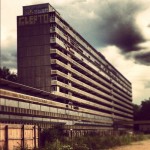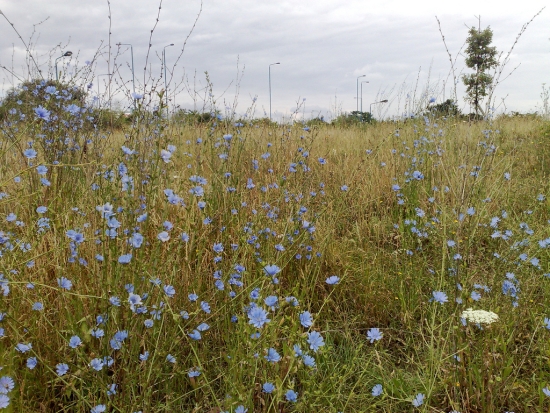Only a few decades ago the only greenery you were likely to see in an urban setting were weeds sprouting from litter strewn brownfield sites. During the post-war years Britain’s cities had been reconstructed and redeveloped in a spirit of optimism and modernity that had rapidly turned sour. Concrete may have looked like the material of the future in architect’s drawings but in the British weather it quickly became dirty and unfit for purpose.

In their enthusiasm to create a new way of living developers and architects looked at buildings overseas – places where the sun shines – and transposed them to rainy Britain. Furthermore, with the exception of a clutch of iconic buildings, they frequently did so using shoddy materials and poor workmanship which resulted in nothing more than pale imitations.
For the people forced to live and work in these structures, the dream of a functional future was rapidly replaced by the depressing day to day reality. Flat roofs leaked. Damp penetrated the walls. Walkways and subways ran with water. For some the dream turned into a nightmare as the buildings began to fall apart around them.
Any landscaping that had been incorporated into the designs was soon trampled into a field of mud by children playing football and riding bikes across the grass. Apart from in the grand Victorian parks, which in many cases had become neglected and dilapidated themselves, greenery was sparse. This is perhaps why a Sunday drive into the countryside was such a popular pursuit for city dwellers in the 60s and 70s.
Today our cities are changing beyond recognition. Admittedly some are way behind others in this respect, but the post-industrial regeneration which has gathered pace since the 1990s has seen world class office buildings changing the skyline of former manufacturing cities like Manchester, Leeds and Sheffield. Equally as significantly, our city centres are once again becoming leisure destinations boasting an array of hotels, restaurants and classy bars.
While some complain that this has resulted in shopping districts becoming ‘clone towns,’ it’s difficult to argue that they aren’t far more pleasant environments than they were 30 years ago. Alongside these developments it’s impossible not to notice the increase in greenery. Everywhere there are hanging baskets, flowerbeds and newly planted trees. Indeed Sheffield has the highest ratio of trees to inhabitants of any city in Europe.
But is this just the latest urban planning fad or does it reflect something deeper? The Guardian’s Paula Cocozza has noted that it seems our cities can’t get enough of the countryside and that this is seen in the proliferation of rustic playgrounds, meadows flourishing beside tower blocks and the popularity of farmers markets.
“Everywhere you look,” she writes, “the countryside has crept into our cities and towns – the way we shop, eat, read, dress, decorate our homes, spend our time.”
She highlights the fact that it is now not uncommon to see wildflowers sown on disused urban land while meadows have been allowed to flourish on otherwise derelict land in cities as far apart as London and Liverpool. While this may reflect stalled commercial developments it’s a vast improvement on the dirty brownfield sites of the past.

Earlier in the year artificial bird’s nests and dandelions decorated the windows of Liberty department store and the latest trend in interior décor is a further reflection of this rural obsession. “We can’t get enough nature in our lives,” Cocozza says, and this is also finding its way into fashion, architecture and design.
Marcus Fairs of online magazine Dezeen agrees. “People got bored by the debate of countryside v city and realised that the best part of the country could be brought into the city,” he says.
He points to the popularity of checked shirts, dungarees and homespun jumpers as evidence of this. In architecture, he adds, the latest thing is “the return of windows that open.”
In design terms, pine and oak are all the rage and rustic earthenware is preferred to porcelain. Raffia, wool, rushwork and weaving have also enjoyed a return to vogue.
“Perhaps we are trying to fashion our own (idea of the countryside),” Cocozza says.
“It would not be unreasonable, after all, to respond to the perils of globalisation and irresponsible banking with a quest for more contact with nature, more attention to the provenance of small, everyday things.”
Maybe this conversion to ruralism is an indication we’ve all taken on board elements of the Green agenda. On the other hand it could be nothing more than a passing longing for a 21st century version of The Good Life. Either way, it’s clear that Britain’s cities have come a long way in the post-industrial age. For some, it’s true, there is still further to go but at least they can now look to others for inspiration.
Previous Post
Hotel Parent Company Appoints Administrators